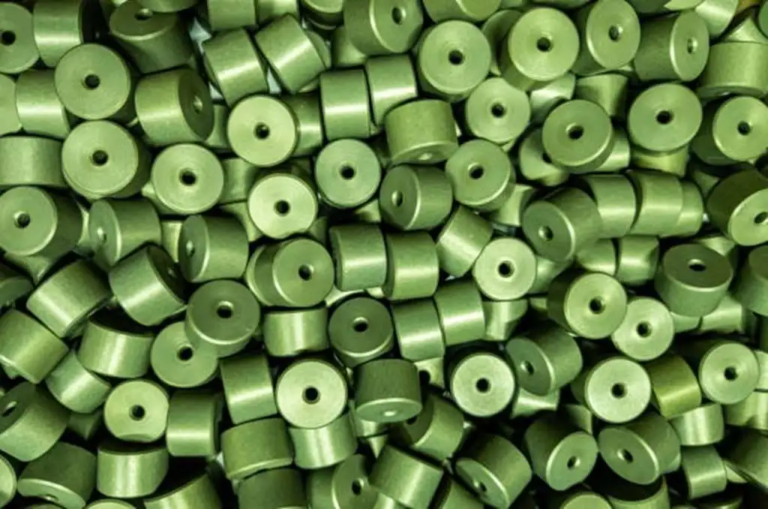Transforming the Textile Industry: Sustainable Technology Advancements
The textile industry is undergoing a seismic shift towards sustainability, driven by technological innovations and an increased emphasis on environmental responsibility. This transformation is not an optional upgrade but a critical necessity, given that the sector has historically been one of the most resource-intensive and environmentally damaging industries globally. A vital element of this shift is the widespread adoption of eco-fabrics, which combine sustainability with high levels of functionality. One prime example of such technological advancement is the COOLMAX® EcoMade Technology, a testament to how the textile industry can move towards eco-friendliness while maintaining or enhancing product quality and performance.
As the industry integrates more sustainable materials and processes into its operations, it reduces its environmental footprint and responds to increasing consumer demand for eco-friendly products. This comprehensive article examines the various aspects of sustainable technology advancements that are revolutionizing the textile industry and offers a close look at the challenges and possibilities that lie ahead.
The Environmental Imperative
The textile industry’s extensive environmental footprint stems from its high water and energy consumption, significant waste production, and pollution generated through various stages of textile processing. The dyeing and finishing procedures use a wide range of environmentally hazardous chemicals. As awareness of these issues grows, governmental regulations and consumer expectations push the industry towards more sustainable practices, making environmental stewardship a business imperative rather than an optional consideration.
Innovations in Sustainable Materials
Organic and Recycled Fibres
One of the most significant steps toward sustainability in the textile industry is the adoption of organic and recycled fibers. Organic cotton, for instance, is grown without synthetic pesticides and fertilizers, reducing harmful environmental impacts. In addition to being more eco-friendly, organic cotton farming practices often result in healthier soil and reduced water usage.
Recycled fibers, such as recycled polyester and reclaimed cotton, are becoming increasingly popular. These materials are made by repurposing waste products, significantly reducing resource consumption and waste generation. According to a report, recycled fibers can cut water and energy use by up to 50%, underscoring their importance in the shift toward sustainability.
Bamboo and Hemp
Bamboo and hemp are emerging as valuable sustainable options in the textile industry owing to their rapid growth rates and minimal agricultural requirements. Bamboo, in particular, is renowned for its fast growth and versatility. Its natural antibacterial properties make it a beneficial material for various applications. Furthermore, bamboo does not require replanting after each harvest, adding to its sustainable credentials.
Hemp, another sustainable option, proliferates and requires little water and no synthetic pesticides. Hemp textiles are known for their durability and strength, making them suitable for various applications ranging from apparel to home furnishings. The rise of bamboo and hemp as mainstream textile materials represents a significant stride towards more sustainable industry practices.
Advancements in Dyeing and Finishing Technologies
Low-impact and Natural Dyes
Traditional dyeing processes are notorious for their environmental impact, often involving water and hazardous chemicals. Low-impact dyes offer a more sustainable alternative, needing less water and fewer chemicals. These dyes are designed to fix quickly to the fabric, thus reducing water consumption and effluent generation.
Natural dyes from plants, minerals, and other renewable materials present another eco-friendly alternative. These dyes are biodegradable and often result in less chemical waste. While natural dyes have historically faced challenges regarding color fastness and consistency, advancements in dye technology resolve these issues, making natural dyes a viable option for various textile applications.
Waterless Dyeing Technologies
Waterless dyeing technologies, such as supercritical CO2 dyeing, represent a groundbreaking advancement in the textile industry. This process reduces the environmental effect and eliminates the need for water by dissolving colors and dying fabrics using compressed carbon dioxide. Supercritical CO2 dyeing also significantly reduces chemical use and eliminates the generation of dye effluent, making it a highly sustainable option.
Circular Economy and Textile Recycling
Closed-Loop Recycling Systems
The shift towards a circular economy is integral to the textile industry’s sustainable transformation. Closed-loop recycling systems reprocess waste materials into new textile products, reducing the need for virgin resources. This approach not only minimizes waste but also conserves energy and raw materials.
For instance, advancements in recycling technology enable the conversion of discarded polyester garments into high-quality new polyester fibers, creating a continuous cycle of reuse. Such systems exemplify circular economy principles, promoting sustainability and resource efficiency in the textile industry.
Textile Upcycling
The process of turning discarded materials or undesired products into new, higher-quality, or more valuable ones is known as textile upcycling. By doing this, garbage is kept out of landfills, and less fresh resources are needed. Upcycling can apply to many products, from upcycled fashion items to home decor.
Upcycling adds value to what would otherwise be discarded by innovatively utilizing waste materials. Upcycling represents creativity and sustainability, contributing to a more circular and environmentally friendly textile industry.
Intelligent Textiles and Wearable Technology
E-Textiles
The intersection of textiles and technology has given rise to intelligent fabrics, or e-textiles, which incorporate electronic components directly into the fabric. These textiles offer various functionalities, such as monitoring vital signs, generating heat, and charging electronic devices. E-textiles have applications in numerous fields, including healthcare, sports, and fashion.
By integrating electronic elements, e-textiles can provide added value and multifunctionality, promoting sustainability. For example, intelligent textiles used in healthcare can monitor patients’ health metrics, allowing for real-time data collection and improved care while reducing the need for disposable medical devices.
Self-Healing Fabrics
Self-healing fabrics are an innovative breakthrough in textile technology. When harmed, these materials can mend themselves, significantly increasing their longevity and lowering the frequency of replacements. This capability reduces resource consumption and waste, contributing to sustainability.
Self-healing textiles utilize advanced materials and microencapsulation techniques to enable the fabric to mend itself. Their applications extend beyond everyday wear to technical and performance textiles, such as outdoor gear and military applications.
Sustainable Manufacturing Practices
Green Factories
Green factories adopt various sustainable practices to reduce their environmental footprint. These strategies include using waste-minimization techniques, energy-efficient equipment, and renewable energy sources like solar and wind power. Green factories aim to lower their carbon footprint, reduce water usage, and minimize waste production by focusing on sustainability from the ground up.
Advancements in industrial technology support the transition to green manufacturing, allowing for more efficient and environmentally friendly operations. These efforts help factories become more sustainable, setting a new standard for eco-friendly textile production.
3D Knitting Technology
3D knitting technology is a revolutionary manufacturing process that enables the production of seamless, custom-fit garments with minimal waste. Utilizing a digital pattern, 3D knitting machines can knit an entire garment in a single piece, eliminating the need for cut-and-sew manufacturing and significantly reducing fabric waste.
This additive manufacturing technique conserves resources and allows for greater design flexibility and customization. By reducing waste and optimizing resource use, 3D knitting technology supports sustainable manufacturing practices in the textile industry.
Conclusion
The textile industry’s transformation through sustainable technology advancements is crucial for its future. The sector is making significant strides towards sustainability, from developing alternative materials and advanced dyeing techniques to implementing circular economy practices and integrating intelligent textiles.
By using cutting-edge technology and practices, the textile sector can significantly lessen its environmental impact, satisfy the rising demand from consumers for eco-friendly products, and contribute significantly to the worldwide drive to attain sustainability. The embrace of eco-fabrics indicates a brighter, greener future for textiles. This holistic approach ensures that the textile industry can thrive responsibly, paving the way for a sustainable future that benefits everyone.






